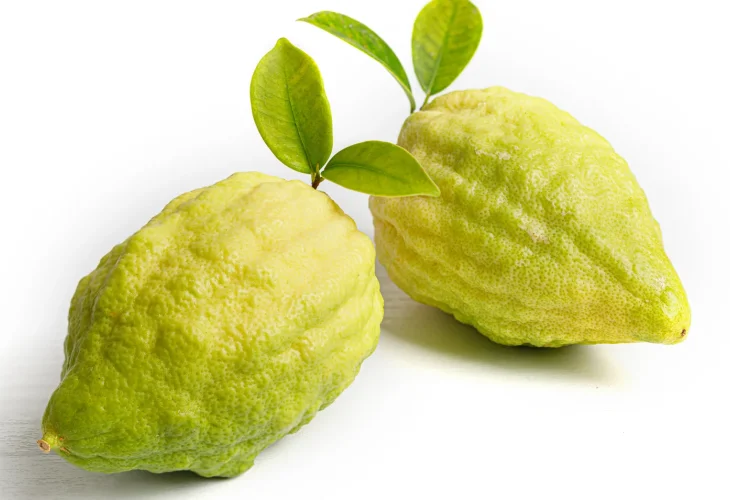The Tale of Corfu Etrogim: The Controversy That Stirred Jewish Communities
During the 18th century, Corfu etrogim gained prominence. Corfu, an agricultural island in western Greece, saw the potential in marketing etrogim to the Jewish diaspora, investing significantly in etrog groves, which were considered especially beautiful and thus highly esteemed.
 (Photo: shutterstock)
(Photo: shutterstock)In the month of Elul, some begin searching for etrogim, with preparations starting late in the month. But in the past, the search had to begin much earlier. Jews in Morocco had local etrog groves, and so did those living in the Land of Israel. However, etrogim trees weren't found in European lands due to the cold climate, unsuitable for citrus fruits.
Consequently, emissaries had to travel many days before Sukkot to bring etrogim to the Jews of Europe. Under such conditions, obtaining an especially beautiful etrog was challenging, and often only the town's rabbi possessed such an etrog, with the entire community taking turns to bless upon it.
Where did these etrogim come from?
Primarily, they were sourced from the Land of Israel, which always had etrog groves. However, acquiring them was not easy. The Ottoman Empire ruled over Israel, sometimes at war with European nations. Israel's conditions were tough, and trade with it was underdeveloped. Etrogim were also grown in sunlit Greek islands, and these were also exported. Although Italy had etrog groves, the climate wasn't warm enough, making Israel's or Greece's etrogim more suitable.
During the 18th century, Corfu etrogim rose in stature. Corfu, a farming island in western Greece, recognized the potential of marketing etrogim to the Jewish diaspora, investing heavily in pleasing etrog orchards regarded as prime quality. At some point (1810), Rabbi Daniel of Horodna (author of "Chamudei Daniel") warned that these etrogim might be crossbred—they appeared too perfect to be natural. Hence, Greeks growing etrogim could not be trusted not to cross them with other citrus species to enhance durability. This opinion was joined by the leader of the generation, the Chatam Sofer. On the other hand, Rabbi Ephraim Margolies, author of "Beit Ephraim," certified these etrogim, and so, despite the controversy, many continued to buy and use Corfu etrogim.
In 1846, the debate re-emerged. A Jew named Rabbi Mintz circulated letters from leading rabbis reasserting the ban on Corfu etrogim, claiming merchants mixed them with etrogim of unknown origins. Enter Rabbi Yehuda Bibas, the chief rabbi of Corfu's Jewish community. He argued that Rabbi Mintz, trading in etrogim from other sources, eyed the profits of Corfu's people enviously. Bibas insisted no unknown etrogim were involved, all were deemed kosher, and it was unjust to defame Jews using Corfu etrogim for generations. Rabbi Chaim Palagi of Izmir supported Bibas, enabling the controversial etrogim to return to widespread European use.
Toward the late 19th century, trade evolved significantly, aided by relatively "modern" transportation and communication, enabling commerce across Europe. Greek traders capitalized on this, forming a cartel to raise prices. Wealthy individuals could afford the exorbitant sums for etrogim, leaving the poorer folk dismayed. In 1870, during the siege of Paris, the magnate Rabbi Jacob Tedeschi declared that whoever left the city to obtain an etrog would receive a thousand francs. Not everyone could afford such prices...
The price hikes provoked the ire of various European activists, including Rabbi Yechiel Brill, editor of the Orthodox publication "HaLevanon," who penned a harsh critique against the Greek cartel, relying on Talmudic sources where sages would absolutely ban buying from a market designed to inflate prices. United Jewish communities throughout Europe boycotted Corfu etrogim, sending back giant containers filled with these ceremonial fruits. Corfu traders, including Jews among them, suffered huge losses, with the Jewish traders releasing explanatory pamphlets arguing against harming Jews. Concurrently, the Chovevei Zion movement advocated for purchasing only Israeli etrogim to support the land's development.
The breaking point was the Corfu pogrom. In 1891, blood libel accusations against Corfu Jews led to the emigration of around five thousand Jews. This economically hurt Corfu residents—their last hope was the etrog trade with Jews. Now perceived, and rightly so, as anti-Semitic, they lost their once-giant economic monopoly.
The echoes of the debate died down but resurfaced when Moses Montefiore planted a citrus grove, including etrogim, in the German colony of Sarona, across from the Ayalon River, formerly known as "Montefiore's Grove." He used cuttings from Corfu etrogim, and the Edah HaCharedit in Jerusalem issued a proclamation against buying them, advising only purchasing from the ancient groves. Over the years, "Montefiore's Grove" became "Montefiore Neighborhood"", now situated between Azrieli Towers and Yitzhak Sadeh Street. The trees were all removed, but two still flourish on Rabbi Yosef Karo Street in the neighborhood.

